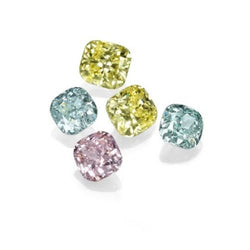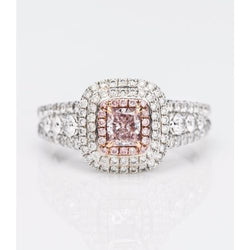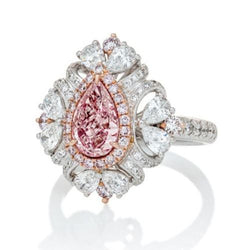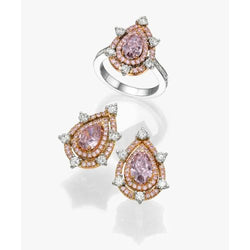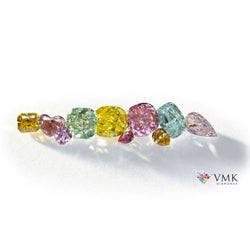All About Rubies
Red varieties of corundum are known as rubies, while all the other colors are called sapphires. Their red hue, ranging from light pinkish red to purple red, comes from traces of chromium.
Ruby is the birthstone for July. It is also the traditional gift gemstone for celebrating a 15th or 40th wedding anniversary.
Rubies are exceptionally strong, ranking a 9 on the Mohs Hardness Scale, as durable as sapphires and only slightly softer than diamonds.
Rubies typically include thin streaks of minerals called needles, which sometimes appear in intersecting groups called silk, or they are intersect and create the star effect, as in sapphires.
They are most commonly found in Burma (Myanmar), Thailand, India and Sri Lanka, as well as in East Africa.
Color
The finest rubies are “pigeon’s blood” rubies, with a vivid, deep red, sometimes with hints of blue.
The intensity of a red ruby makes it a popular choice for romantic gifts and communicate passion.
There is debate in the gemology community about the borderline between a ruby and a pink sapphire, with some including shades of pink corundum in the ruby classification, while others classify them as pink sapphires.
Unless an independent report states otherwise, a savvy consumer should assume that a ruby has been heat treated. None of the rubies sold by VMK undergo heat treatment, making them exceptionally rare.
Cut
Because they are so precious, rubies are cut so as to preserve as much weight as possible. Due to its particular crystal structure, rubies lend themselves well to oval or rounds cuts, but they are also cut in emerald, cushion and other shapes.
Carat Weight
Gemstone-quality rubies over one carat are extremely rare, and the price per carat increases dramatically as it increases in size.
Cost
Nearly all rubies have imperfections. Flawless rubies are extremely rare and can command even higher prices than flawless diamonds of a similar weight. The more visible the inclusion, or the more it reduces transparency, the more it will reduce the gemstone’s value. That said, the presence of inclusions can help distinguish genuine gemstones from synthetic or treated natural rubies.
The value of a ruby is determined foremost by its color saturation, followed by its brilliance and color distribution.
Nearly all rubies on the market area heat treated to improve their color. Rubies with a report from an independent laboratory confirming no evidence of heat treatment warrant premium prices. Other treatments such as fracture filling with glass or surface diffusion reduce the value of a ruby more than heat treatment.
Famous Rubies
The Rosser Reeves Star Ruby is a 138.7-carat star ruby from Sri Lanka. It is so clear it is practically translucent and features a six-rayed star. It currently belongs to the Smithsonian National Museum of Natural History.
The Mogok Ruby, or Alan Caplan Ruby, is named after the famous mineralogist. The 15.97-carat stone was sold for $5,630 in 1988.
The Nawata Ruby, weighing in at an impressive 496.5 carats is a national treasure of Myanmar and is in the Rangoon Gems Museum. It was smuggled into Thailand and seized by Burmese agents and named the “SLORC” ruby, an acronym for the State Law and Order Restoration Committee of the Burmese government.
The DeLong Star Ruby weighs just over 100 carats and is characterized by a 6-ray star spanning its entire circular shape. It is held at the Natural History Museum in New York City.

 Pink
Pink Yellow
Yellow Green
Green Chameleon
Chameleon Blue
Blue Purple
Purple Violet
Violet Red
Red Orange
Orange Brown
Brown Gray
Gray Black
Black White
White Colorless
Colorless Radiant
Radiant Cushion
Cushion Pear
Pear Round
Round Heart
Heart Half Moon
Half Moon Baguette
Baguette Emerald
Emerald Asscher
Asscher Princess
Princess Marquise
Marquise Oval
Oval Shield
Shield Trapeze
Trapeze